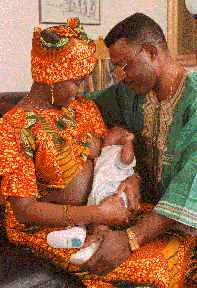
|
||
The World Alliance for Breastfeeding Action (WABA) is a global network of individuals & organisations concerned with the protection, promotion & support of breastfeeding worldwide. WABA action is based on the Innocenti Declaration, the Ten Links for Nurturing the Future and the Global Strategy for Infant & Young Child Feeding. WABA is in consultative status with UNICEF & an NGO in Special Consultative Status with the Economic and Social Council of the United Nations (ECOSOC). |

Breastfeeding Habits Optimal breastfeeding is the key to successful LAM. The suggestions below maximize the health and nutrition benefits of breastfeeding and improve LAM.
Family Planning for the Breastfeeding Woman Frequently Asked Questions (FAQs) about LAM This page was adapted from the original web site of the Institute for Reproductive Health, a project funded by the United States Agency for International Development (USAID) under the terms of Cooperative Agreement DPE-3061-A-00-1029-00. Information (photos excluded) and publications may be reproduced, adapted, and disseminated without permission, provided the Institute for Reproductive Health is acknowledged and the material is distributed free of charge, or not for profit.
|
 |
World Alliance for Breastfeeding Action |
||
| Site Map | PO Box 1200, 10850 Penang, Malaysia | Tel: 604-6584816 | Fax: 604-6572655 | E-mail: waba@waba.org.my | http://www.waba.org.my | |